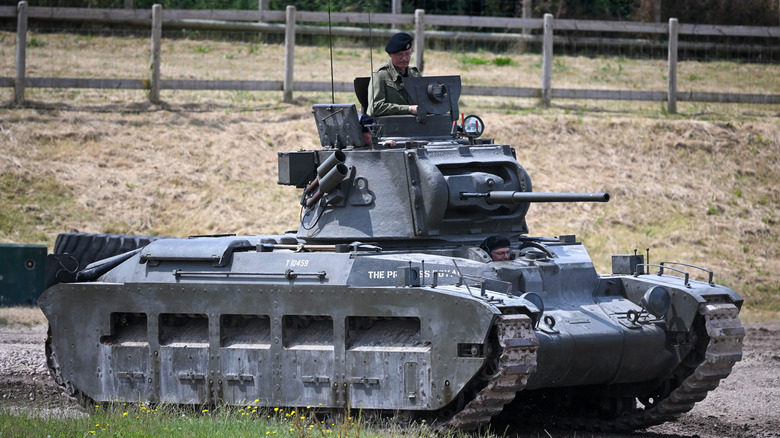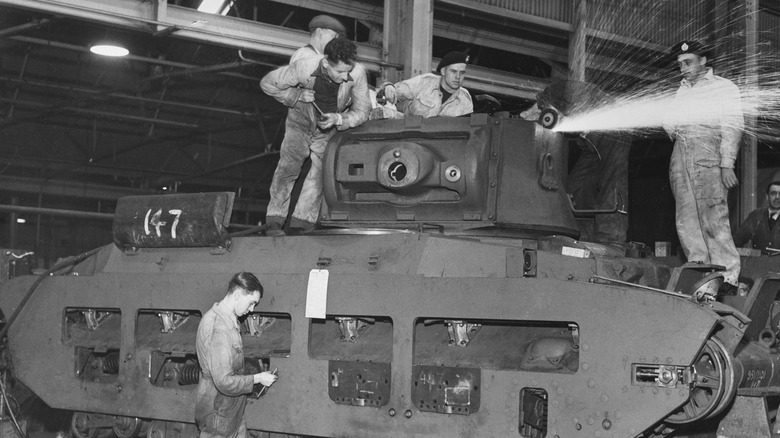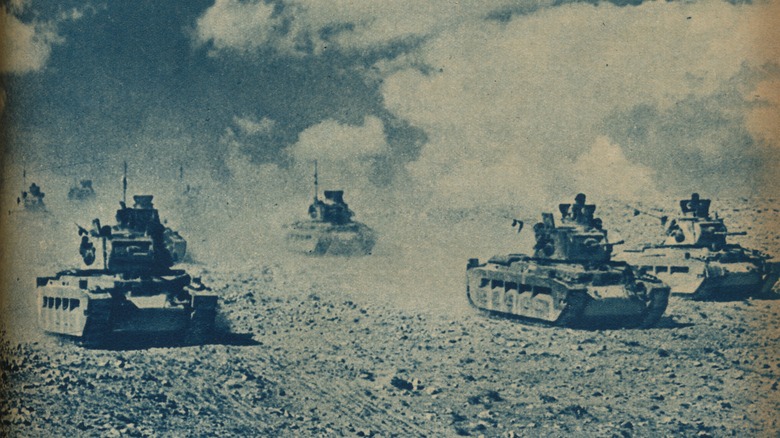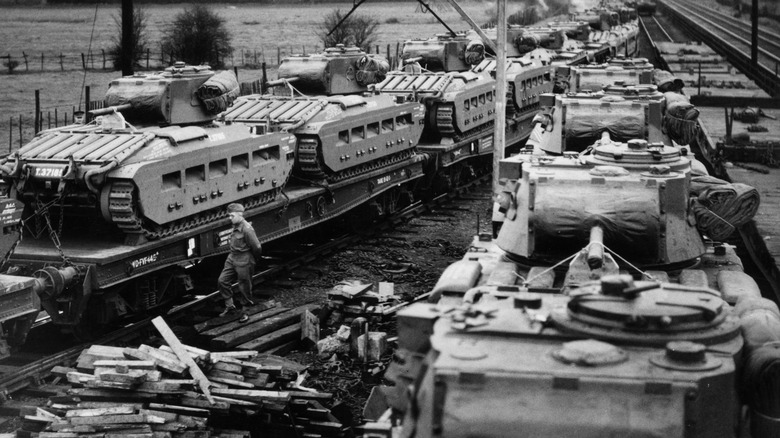Everything To Know About The Matilda II Infantry Tank
A tool of warfare is just that: A tool. It's not really something you're supposed to anthropomorphize, especially considering the purpose tanks are used for. Nevertheless, when a particular gun or infantry vehicle saves your hide more than a few times, you start to see it as a vital companion, almost as much as your fellow combatants. It's not just a gun or a tank anymore; it's got a capitalized name and a silhouette that brings hope wherever it goes.
One example of a tool of warfare that managed to amass such a reputation, at least for a time, was an infantry tank that saw brief usage in the midst of World War II. This tank was the British-made A12 infantry tank, better known by its official moniker, the Matilda II. So, how exactly did this mighty vehicle come to be, and what kind of impact did it have on the progression of the war?
The creation of the Matilda II
In the mid-1930s, right before World War II began in earnest, the British Army was tinkering with some new designs for tanks to replace one of its standby models, the A11, also known as the Matilda. The original Matilda was produced while the U.K. was in the midst of a financial crisis, which left it underperforming with weak offensive capabilities. With armed conflict looming, the Royal Arsenal received word from up high to get a battlefield-ready version of the Matilda on the ground in a hurry.
The result of this missive was the Matilda Mark II, or just Matilda II for short. This iteration of the Matilda tank solved one of the original model's most pressing problems, a lack of offensive ability against enemy armor. The QF 2 Pounder gun for the main armament and a 7.92 mm Besa machine gun swiftly made the Matilda II one of the best infantry tanks on the scene, and not a moment too soon. It also had better defense, with a set of armor measuring up to 78mm at its thickest points.
Queen of the desert
The first batch of Matilda II tanks were sent to France as part of the British Expeditionary Armored Division, where they saw active deployment in the Battle of Arras in 1940. While the Allies ultimately lost this encounter, it was thanks to the deployment of the Matilda IIs that their forces managed to last as long as they did, not to mention take down quite a few enemy combatants in the process. The Matilda IIs were better defended than any other Allied tank on the field at the time, which were made up primarily of outdated Matilda Is and French B1s.
Matilda II's real claim to fame came about later that same year during conflicts in North Africa. Its thick armor plating was sturdy and stood up to most Axis armored divisions' weapons, which also couldn't handle the force of the Matilda II's Ordnance QF 2-pounder 40mm gun. The tank became the bane of the Axis Panzer divisions, earning it an unofficial moniker from its inspired operating crews: "Queen of the desert."
The end of the line
Sadly, the queen's reign was short-lived. After only a year in active deployment, the Axis forces began to adapt to the Matilda II's strengths and exploit its weaknesses. Larger, heavier-caliber artillery and the best tank destroyers were utilized to punch through the Matilda II's thick armor, and ambush tactics were used to get the drop on the tank's operators. Due to its heavy armor, the Matilda could only move up to 16mph, so a quick escape in the midst of an ambush was out of the question.
As they could no longer handle the brunt of the Axis forces, the majority of Matilda II tanks were shipped out to less intense conflicts in Eastern Asia and Russia, utilized for non-combat purposes like patrols and minesweeping, or decommissioned due to extensive damage. The British Army discontinued the use of Matilda IIs altogether in 1942, with only some Australian soldiers in New Guinea utilizing them until the war concluded in 1945.



